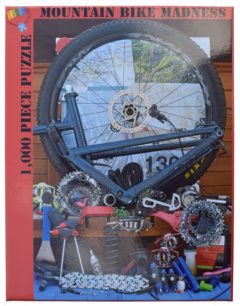How do you choose the right puzzle? Is it the picture, the size, the number of pieces? Consider these ideas when choosing the right puzzle: Tips for selecting the perfect puzzle size for your skill level and available space.
Jigsaw puzzles are a great way to relax and unwind, but choosing the right puzzle size can be a challenge. Puzzles come in a variety of sizes, from small 100-piece puzzles to massive 5000-piece behemoths. In this post, we’ll explore some tips for selecting the perfect puzzle size for your skill level and available space.
Consider Your Skill Level
The first step in choosing the right puzzle size is to consider your skill level. If you’re new to puzzles or haven’t completed one in a while, it’s best to start with a smaller puzzle, such as a 100-500 piece puzzle. These puzzles are typically easier to complete and will help you build your skills and confidence.
If you’re a more experienced puzzle enthusiast, you may want to challenge yourself with a larger puzzle, such as a 1000-piece or 2000-piece puzzle. These puzzles offer more pieces and a greater level of difficulty, but can also be more rewarding when completed.
Consider Your Available Space
Another important factor to consider when selecting a puzzle size is your available space. If you have a small table or limited workspace, it may be difficult to work on a large puzzle. In this case, a smaller puzzle would be a better choice.
On the other hand, if you have a large table or dedicated puzzle area, you may want to choose a larger puzzle that will take up more space. Just be sure to factor in the size of the completed puzzle when selecting a puzzle size, as you’ll need to have enough space to display the finished product.
Consider Your Interests
The theme of the puzzle can also play a role in selecting the right puzzle size. If you’re interested in a specific theme, such as nature or animals, you may want to choose a larger puzzle to fully capture the detail and beauty of the image.
Conversely, if you’re less interested in the theme and more focused on the puzzle itself, you may want to choose a smaller puzzle that offers a greater challenge.
Tips for Completing a Large Puzzle
If you do decide to tackle a large puzzle, there are a few tips to keep in mind to make the process easier and more enjoyable:
- Sort the pieces: Before starting the puzzle, sort the pieces by color and edge pieces. This will make it easier to find the right pieces as you work on the puzzle.
- Work on sections: Instead of trying to tackle the entire puzzle at once, break it down into sections and work on one section at a time.
- Take breaks: Completing a large puzzle can be time-consuming, so be sure to take breaks as needed to avoid eye strain and fatigue.
- Frame the puzzle: Once you’ve completed the puzzle, consider framing it to display in your home or office.
Conclusion
Choosing the right puzzle size is an important part of the puzzle experience. By considering your skill level, available space, and interests, you can select a puzzle size that is challenging, rewarding, and enjoyable to complete. Whether you prefer small and simple puzzles or large and complex ones, there is a puzzle size out there that is perfect for you.
